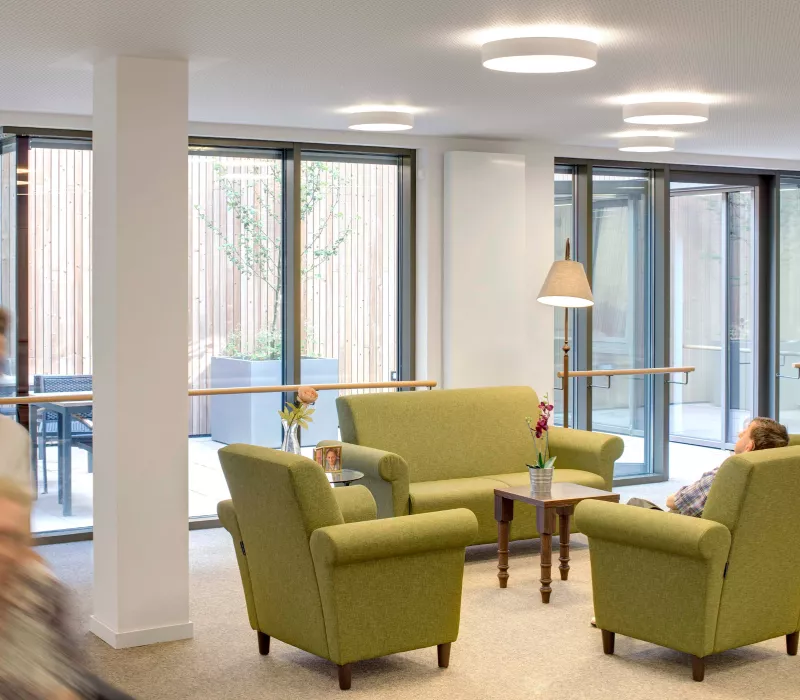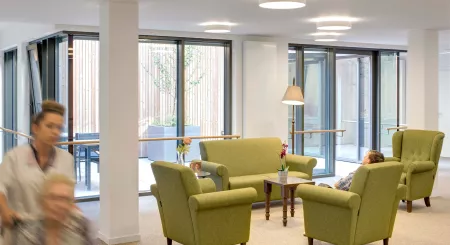The notion that dementia is a single disease is perhaps the biggest misconception surrounding this syndrome – it’s actually an umbrella term for different brain disorders. Tailoring an environment to the needs of people with dementia can help them in their daily activities. Sabine Boerjan from the Flanders Centre of Expertise on Dementia explains how and why a dementia-friendly interior offers added value.
Who has dementia?
Dementia and early dementia are umbrella terms for brain disorders stemming from neurodegenerative processes. The speed of these processes depends on the individual. “The diagnosis is often done by excluding other factors,” explains Sabine Boerjan from the Centre of Expertise on Dementia. “Forgetfulness, confusion, no longer being able to function in daily life, no longer taking care of oneself, etc. We establish that someone has a form of dementia through a combination of different symptoms.”
A dementia-friendly environment
Some 70% of people with dementia still live at home instead of a residential care centre. The residence must be homelike on the one hand and functional on the other. “People with dementia need to understand the layout, find their way and sense which room is theirs,” says Sabine. “One thing you can do in a residential care centre is add a personal touch. The experience of a given environment is different for everyone. That’s why we should always pay attention to what the individual finds important.”
Recognisability
It’s important to take into account what people with dementia recognise, know and feel. This gives them a feeling of familiarity. When they recognise something, they feel more confident and function better. “One example is marking the toilets with a heart, like on the doors of the past,” says Sabine. “Or using plenty of light, especially in the bathroom or dining room. This stimulates brain activity.”
Scents and colours
Older people see colours and nuances less clearly. Working with colour contrasts makes your environment easily visible and also reduces falls. Always choose warm colours, which are more calming and more noticeable. Things are different when you work with scents. “Scents are very personal. They make an emotional connection in our brain,” says Sabine. “We recommend seeing what the person with dementia likes and dislikes. Scent is also strongly linked to taste. In that area, we advise introducing variations in spices, temperatures and textures.”
The feel of materials
Older people with dementia need specific health care furniture. But you can also stimulate brain activity through different materials. Choose soft fabrics in the bedroom and look out for other places where you can alternate between cold and warm-feeling textures. How about noises? “They’re harder to filter out,” says Sabine. “But with the radio on, you can make the sound of trolleys going through care centre corridors disappear into the background.”
The Flanders Centre of Expertise on Dementia Paradox, Moments Furniture and Studio M will be glad to help you choose a dementia-friendly interior. Contact us for more information.









